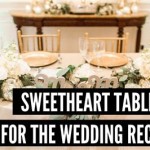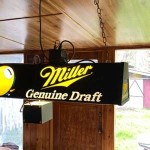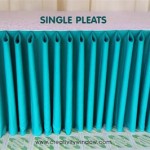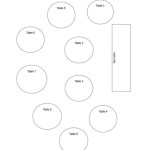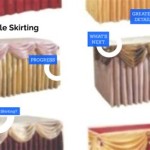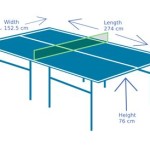```html
Glass Table Top: Versatility and Practicality
Glass table tops represent a functional and aesthetically versatile element in interior design. Their use spans a wide range of applications, from protecting existing furniture to creating striking, modern statement pieces. Understanding the properties, types, and considerations involved in selecting a glass table top is crucial for ensuring its suitability for a specific purpose and longevity.
The popularity of glass table tops stems from several key advantages. They offer a sleek and contemporary aesthetic, seamlessly blending with various design styles. Glass, being a transparent material, allows light to pass through, creating a sense of spaciousness and airiness in a room. Furthermore, glass is relatively easy to clean and maintain, making it a practical choice for high-traffic areas. Unlike wood or other materials, glass is non-porous and resistant to stains and moisture damage, provided appropriate sealants and care are applied to any surrounding frame or base. Finally, a glass table top can protect the surface of underlying furniture from scratches, spills, and other forms of wear and tear.
Types of Glass for Table Tops
The selection of glass is paramount in determining the durability and safety of a glass table top. Several types of glass are commonly employed, each possessing distinct characteristics that influence its suitability for different applications. The most common types include annealed glass, tempered glass, and laminated glass. Understanding the differences between these types is essential for making an informed decision.
Annealed Glass: Annealed glass, also known as standard glass, is the basic form of glass produced through a process of slow cooling. While relatively inexpensive, annealed glass is the least durable option for table tops. If broken, it shatters into large, sharp shards, posing a significant safety hazard. Therefore, annealed glass is generally not recommended for applications where impact resistance or safety are concerns. It is typically more suitable for decorative purposes or in lower-traffic areas where the risk of breakage is minimal. Its cost-effectiveness often makes it a viable option for budget-conscious selections where safety isn't the primary requirement.
Tempered Glass: Tempered glass is significantly stronger than annealed glass, having undergone a heat treatment process that increases its resistance to impact and thermal stress. When tempered glass breaks, it shatters into small, relatively harmless fragments instead of large, sharp shards. This property makes tempered glass a much safer option for table tops, particularly in households with children or pets. Tempered glass is often the default choice for dining tables, coffee tables, and other surfaces where accidental impacts are likely. The process of tempering increases the cost compared to annealed glass, but the added safety and durability justify the investment in many scenarios.
Laminated Glass: Laminated glass consists of two or more layers of glass bonded together by a plastic interlayer, typically made of polyvinyl butyral (PVB). This interlayer holds the glass fragments together if the glass is broken, preventing it from shattering and reducing the risk of injury. Laminated glass offers the highest level of safety and is frequently used in applications where security is a concern, such as storefronts and vehicle windshields. While more expensive than tempered glass, laminated glass provides superior protection and sound insulation. In a table top context, it offers the most substantial level of protection against breakage and potential injury, making it ideal for environments where safety is paramount.
Thickness and Edge Treatments
In addition to the type of glass, the thickness and edge treatment are crucial considerations when selecting a glass table top. The thickness of the glass determines its load-bearing capacity and resistance to warping or sagging. The edge treatment affects its appearance, safety, and overall durability. Thicker glass and appropriate edge treatments contribute to a more robust and aesthetically pleasing table top.
Thickness: The appropriate thickness of a glass table top depends on its size, shape, and intended use. For small side tables or protective covers, thinner glass (e.g., 1/4 inch or 6mm) may be sufficient. However, larger table tops, especially those intended for dining or working, require thicker glass (e.g., 3/8 inch or 10mm, 1/2 inch or 12mm, or even thicker) to prevent sagging and ensure stability. A general rule of thumb is that larger the table top, the thicker the glass should be. Consulting with a glass professional is recommended to determine the optimal thickness for a specific application. Overestimation of thickness is generally preferred to underestimation, as it offers increased safety and stability.
Edge Treatments: The edge treatment of a glass table top refers to the way the edges are finished. Different edge treatments offer varying aesthetic and safety benefits. Common edge treatments include:
- Flat Polish: A flat polished edge provides a clean, contemporary look with a smooth, flat surface.
- Beveled Edge: A beveled edge is angled, creating a decorative and elegant appearance.
- Pencil Polish: A pencil polished edge is rounded, providing a softer and more comfortable feel.
- Ogee Edge: An ogee edge features a decorative S-shaped curve, adding a touch of sophistication.
- Seamed Edge: A seamed edge involves simply removing the sharp edges, offering a basic and cost-effective option.
Applications and Considerations
Glass table tops find application in diverse settings, each presenting unique design and functional demands. From dining tables and coffee tables to desks and protective covers, understanding specific requirements ensures optimal performance and aesthetic integration. Careful consideration of size, shape, support structure, and environmental factors is vital for satisfactory results.
Dining Tables: Glass dining table tops require robust support structures and sufficient thickness to accommodate the weight of dishes, cutlery, and other items. Tempered or laminated glass is highly recommended for safety reasons. The shape of the table top can also influence the support requirements. For example, large rectangular or oval tables necessitate more substantial support than smaller, round tables. The base should be designed to distribute weight evenly and prevent stress points on the glass.
Coffee Tables: Glass coffee tables often serve as focal points in living rooms. While tempered glass is still recommended for safety, the thickness can be slightly less than that of a dining table, depending on the size and intended use. Creative base designs can be incorporated to enhance the aesthetic appeal. Consider the height of the coffee table in relation to the surrounding seating to ensure comfortable use. The surface area should be adequate for holding beverages, books, and decorative items.
Desks: Glass desk tops offer a sleek and modern workspace. Adequate thickness is essential to prevent sagging under the weight of computers, monitors, and other office equipment. Tempered or laminated glass is preferred for safety. Consider the potential for glare and reflection when positioning the desk in relation to windows or light sources. A matte finish can help to reduce glare and improve visibility. Additionally, ensure the base provides adequate legroom and stability.
Protective Covers: Glass table top protectors are commonly used to safeguard existing furniture from scratches, spills, and other damage. The thickness of the glass can be relatively thin for this application, but tempered glass is still a worthwhile investment for added safety. Ensure the protector is slightly larger than the surface it is intended to cover to provide complete protection. Consider using clear silicone bumpers or pads to prevent the protector from sliding and scratching the underlying furniture.
General Considerations: Several other factors warrant consideration when selecting a glass table top. These include:
- Support Structure: Ensure the base or support structure is strong and stable enough to support the weight of the glass and any items placed on it.
- Size and Shape: Choose a size and shape that complements the surrounding space and meets the intended functional needs.
- Clarity: Opt for low-iron glass for maximum clarity and minimal green tint, especially if showcasing a particular color scheme or design underneath.
- Cleaning and Maintenance: Regularly clean the glass with a mild detergent and a soft cloth to maintain its clarity and shine. Avoid using abrasive cleaners, which can scratch the surface.
- Professional Installation: For large or complex installations, consider hiring a professional glazier to ensure proper handling and secure installation.

36 Round Clear Glass Table Tops

36 Round Clear Glass Table Tops

36 Inch Round Tempered Glass Table Top Clear 2 5 Thick Beveled Polished Edge

Fab Glass And Mirror 36 In Clear Round Table Top 3 8 Thickness Tempered Beveled Edge Polished 36rt10thbete The Home Depot

36 Round Clear Glass Table Tops

Fab Glass And Mirror 36 In X 72 Clear Rectangle Table Top 1 4 Thick Flat Edge Polished Tempered Eased Corners 36x72rect6thflt The Home Depot

36 Square Clear Glass Table Tops

36 Inch Round Tempered Glass Table Top Clear 1 4 Thick Flat Polished Edge

36 Inch Round Glass Table Top 1 4 Thick Clear Tempered With Beveled Edge Polished Com

Fab Glass And Mirror 36 In Clear Round Table Top 1 2 Thickness Tempered Beveled Edge Polished 36rt12thbean The Home Depot

